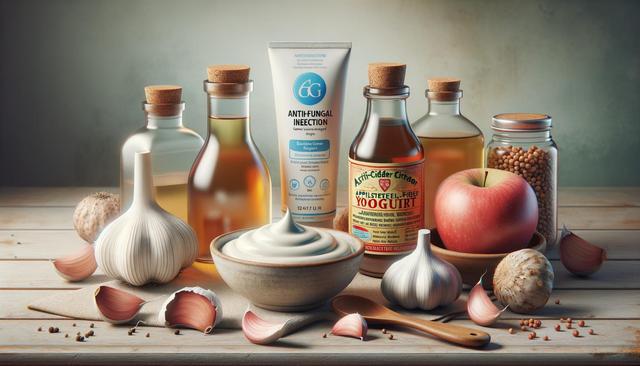Recognizing the Symptoms and Causes of Yeast Infections
Before exploring treatment options, it’s important to recognize the common symptoms and potential triggers of yeast infections. These infections are typically caused by an overgrowth of Candida, a type of yeast that naturally lives in the body. When the balance of bacteria and yeast in the vagina is disrupted—due to factors like antibiotics, hormonal changes, or high sugar intake—it can lead to an infection.
Common symptoms include:
- Itching and irritation in the vaginal area
- Thick, white vaginal discharge resembling cottage cheese
- Redness and swelling of the vulva
- Burning sensation during urination or intercourse
Understanding these signs can help women seek timely and appropriate care. Knowing how to make a yeast infection stop itching and identifying contributing factors can reduce discomfort and prevent recurrence.
Over-the-Counter Options and Their Effectiveness
Many individuals turn to non-prescription solutions for fast relief, and knowing what over the counter medicine is good for a yeast infection can be a helpful starting point. These treatments typically include antifungal creams, ointments, and suppositories that work by targeting the Candida fungus directly. Common active ingredients include clotrimazole, miconazole, and tioconazole.
When using over-the-counter remedies, it’s important to:
- Follow dosage instructions carefully
- Complete the full course of treatment, even if symptoms improve
- Monitor for any adverse reactions or allergies
These products are widely accessible and offer convenience, but they may not be suitable for everyone—especially those with recurring infections or underlying health conditions. Consulting with a healthcare provider is recommended if symptoms persist or worsen.
Prescription Treatments and When to Consider Them
For more severe or persistent cases, prescription options may be necessary. Oral antifungal medications, like fluconazole, are commonly prescribed and often effective in clearing infections with a single dose. This raises the question: Is one day yeast infectiTreatment effective? While single-dose therapies can work well for uncomplicated cases, they may not be suitable for everyone, particularly those with frequent infections.
Prescription treatments may be recommended in cases such as:
- Recurring yeast infections (four or more per year)
- Infections that do not respond to over-the-counter options
- Infections accompanied by other medical conditions, such as diabetes or compromised immune function
Always consult a healthcare provider before starting prescription medications to ensure they are appropriate for your individual situation.
Natural and Home-Based Remedies
In addition to conventional treatments, some people explore natural or home-based remedies for relief. While these methods should not replace medical treatments, they may help support recovery or provide temporary relief from symptoms such as itching and irritation.
Some common home remedies include:
- Applying unsweetened yogurt topically or consuming it to help restore healthy bacteria
- Using diluted tea tree oil (with caution and proper dilution) for its antifungal properties
- Taking probiotics to support vaginal flora balance
Though popular in some circles, it’s important to note that scientific evidence supporting these remedies is limited. When wondering how to clear a yeast infection in one day, natural methods alone are unlikely to provide complete relief that quickly. Nonetheless, they may complement medical treatment and support overall vaginal health.
Prevention and Lifestyle Support
Prevention plays a key role in reducing the frequency and severity of yeast infections. Implementing a few healthy habits can help maintain the natural balance of microorganisms in the vaginal environment and lower the risk of infection.
Effective prevention strategies include:
- Wearing breathable, cotton underwear and avoiding tight clothing
- Practicing good hygiene and keeping the genital area dry
- Limiting use of scented hygiene products, which can disrupt pH balance
- Managing blood sugar levels, particularly for those with diabetes
For those seeking reliable yeast infection treatment for women, combining medical care with lifestyle adjustments can lead to longer-term relief. Understanding how to make a yeast infection stop itching and taking proactive measures can significantly improve comfort and reduce recurrence.
Conclusion: Choosing the Right Remedy for Your Needs
Exploring treatment options for yeast infections involves understanding both symptoms and suitable remedies. Whether using over-the-counter solutions, prescription medications, or supportive home remedies, the key is to choose a method that addresses the root cause while providing relief. While questions like how to clear a yeast infection in one day reflect a desire for fast solutions, it is important to approach treatment with accurate information and realistic expectations. For long-term vaginal health, combining effective treatment with preventive care is essential.




Leave a Reply